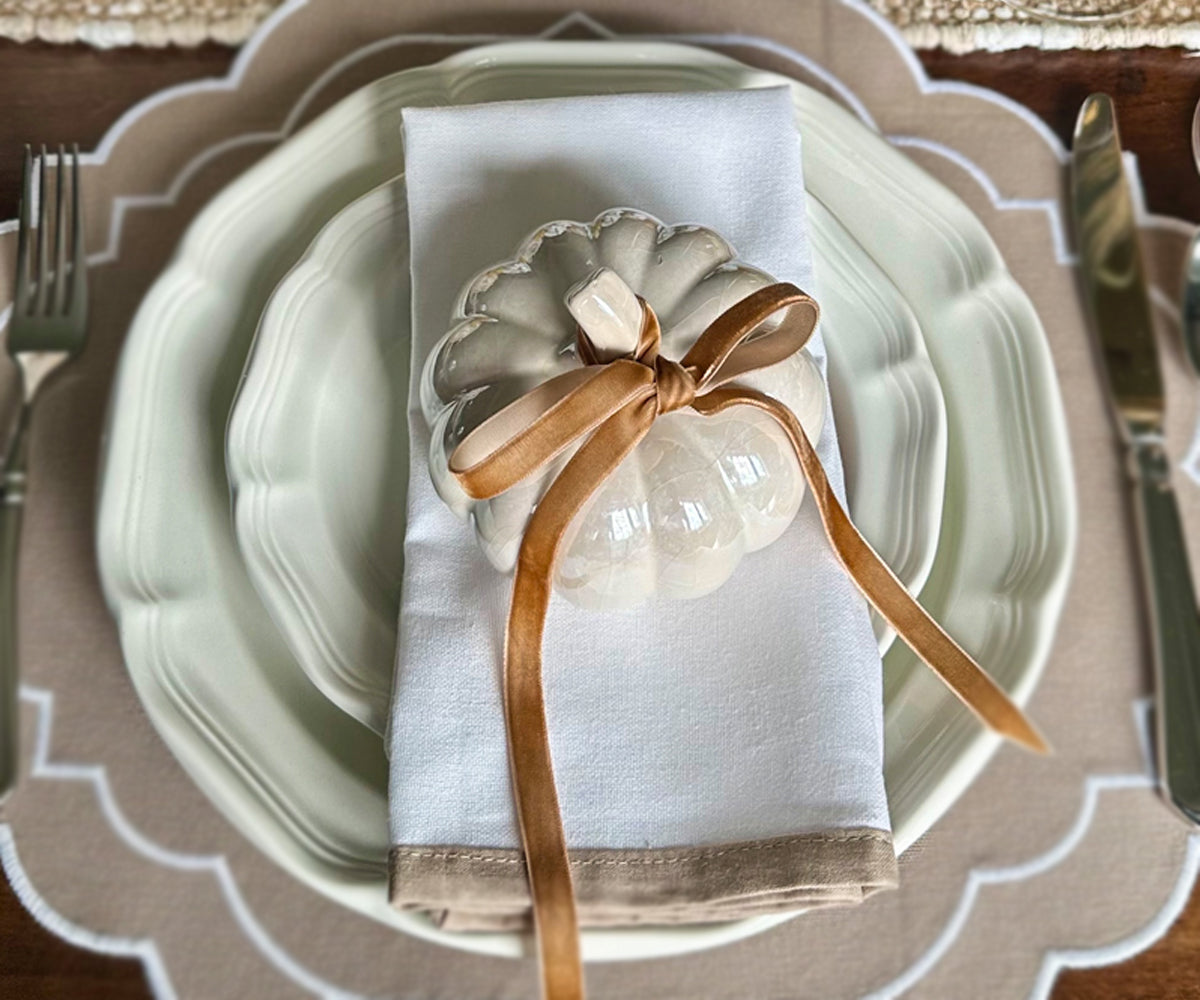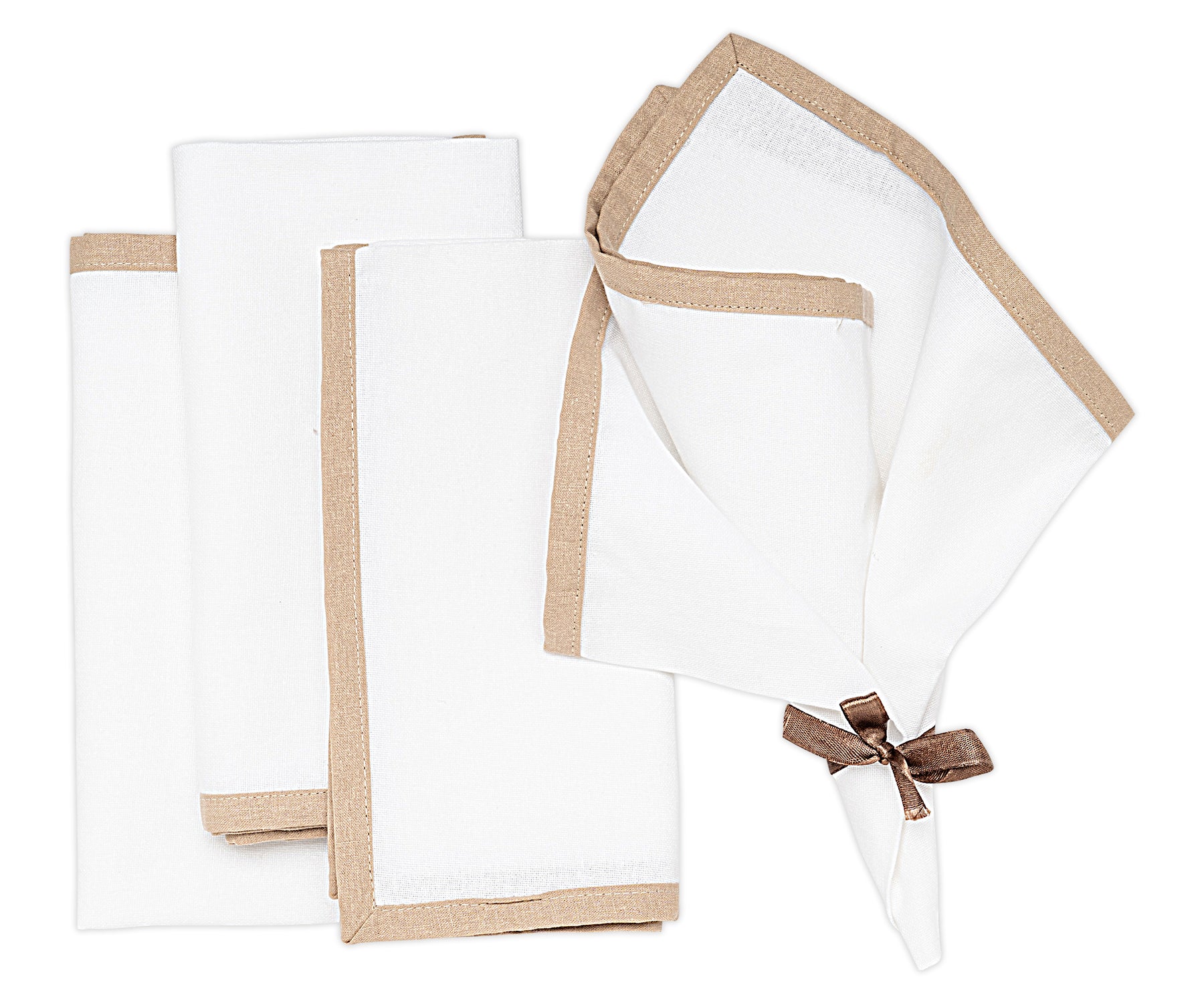Step 1: Prepare the Tablecloth
Lay the tablecloth flat on your chosen surface. Ensure it is clean, free from wrinkles, and properly laundered, as any imperfections will be visible in the final result.

Step 2: Identify the Top and Bottom Edges
Identify the top and bottom edges of the cloth tablecloth. The top edge is typically the shorter of the two and is usually finished with a decorative hem or edge, while the bottom edge is longer and often left unfinished.
Step 3: Align the Tablecloth
Fold the rectangular tablecloth in half lengthwise by bringing the top edge down to reach the bottom edge. Ensure that the edges align perfectly and the corners match up.

Step 4: Smooth Out Any Wrinkles
Take a moment to smooth out any wrinkles or creases in the tablecloths to ensure a neat finish. Run your hands gently over the fabric, starting from the center and working your way outward.
Step 5: Fold in Half Again
Fold the white tablecloth in half once more by bringing the top edge down to reach the bottom edge. You should now have a long, narrow rectangle.

Step 6: Fold the Sides In
Next, fold in the sides of the tablecloth to create a smaller rectangle. To do this, bring the left edge of the outdoor tablecloth towards the center and then fold the right edge over the left. Ensure that the edges align neatly.
Step 7: Adjust and Fine-Tune
Take a moment to adjust and fine-tune the folds to ensure that your tablecloth, like a checkered tablecloth, is perfectly squared off. Ensure that the edges are straight and the corners are well-defined.

Step 8: Fold in Half One More Time
Fold the tablecloth in half one more time by bringing the top edge down to meet the bottom edge. You should now have a smaller square or rectangle, depending on the original size of your tablecloth.
Step 9: Store or Display
Your rectangle tablecloth is now neatly folded and ready to be stored or displayed. Place it in a linen closet or on a shelf, or use it to dress your dining table for your next gathering.
Tips for a Flawless Fold
Practice Makes Perfect: Don't be discouraged if your first attempt isn't flawless. Like any skill, practice will improve your folding technique.
Choose the Right Fabric: The type of fabric your tablecloth is made of will impact how it folds. Natural fibers such as linen and cotton tend to fold neatly, while synthetic materials may require more effort.
Iron Before Folding: If your tablecloth, like white rectangle tablecloth, is particularly wrinkled, consider ironing it before folding. Ironing will give you a smoother finish.
Avoid Overhandling: Handle the tablecloth gently to avoid introducing unnecessary wrinkles or creases during the folding process.
Store Properly: When storing your folded tablecloth, place it in a cool, dry place, away directly from sunlight, to prevent discoloration and damage to the fabric.
Folding a rectangle tablecloth may seem like a minor detail, but it can make a valuable difference in the overall presentation of your dining table. With a little practice and attention to detail, you can achieve a perfectly folded tablecloth that adds elegance and charm to any meal. Whether you're hosting a formal dinner party or a casual family gathering, a well-folded tablecloth is sure to impress your guests and enhance the dining experience. So, take your time, follow the steps outlined in this guide, and fold your tablecloth with care to elevate your table setting to the next level.












